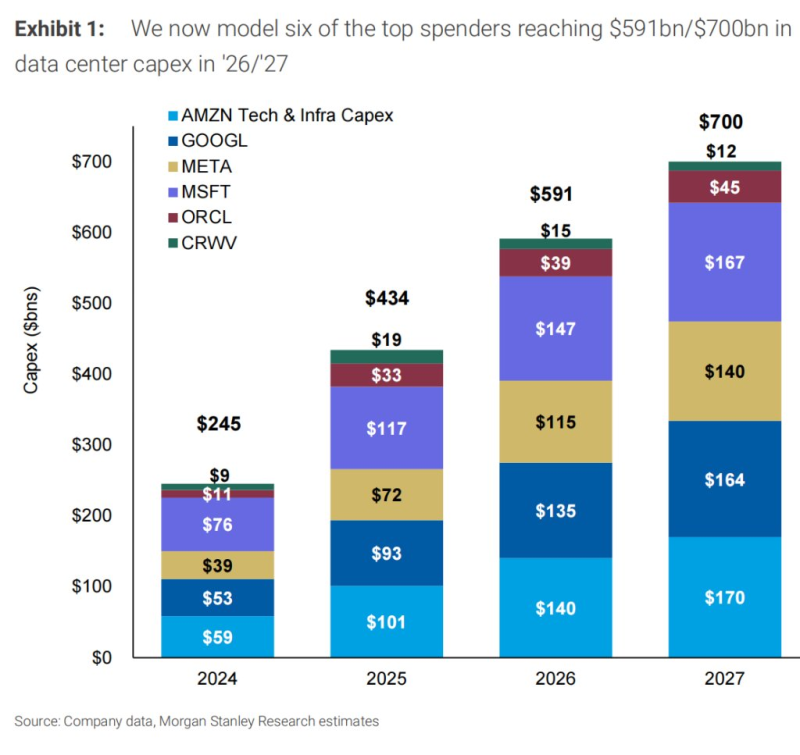● AWS is hitting growth headwinds due to capacity constraints. Even with aggressive expansion plans, the company can't scale fast enough to meet soaring demand for AI compute power—especially for high-profile projects like ChatGPT. Morgan Stanley notes that supply shortages have become the main factor shaping AWS's growth strategy and Amazon's broader expansion.

● Morgan Stanley forecasts 23-25% revenue growth for AWS over the next two years, though capacity limits are tempering what could be even faster acceleration. October was huge—AWS closed over $18 billion in new business, more than the entire Q3 2025. AI-related contracts are already paying off, with analysts projecting an extra $6 billion in revenue by 2026.
● Despite current constraints, AWS isn't slowing down. The plan is to add 10 GW of data center capacity over the next two years. Morgan Stanley raised its capex outlook by 13-19%, forecasting total investments of $169 billion in 2026 and $202 billion in 2027. Tech and infrastructure spend alone will hit $140-170 billion—eclipsing the capital outlays of Microsoft, Meta, and Google.
● The AI-driven data center boom is creating a collision between tech innovation and energy infrastructure. U.S. power grid bottlenecks are forcing companies like AWS to adopt a "Bring-Your-Own-Power" approach. The "Stargate 1" project, for example, includes plans for on-site power generation to sidestep grid limitations. This marks a new playbook for scaling tech infrastructure while navigating regulatory hurdles and supply chain pressures. As expansion continues, demand for energy, equipment, and skilled labor keeps intensifying.
 Usman Salis
Usman Salis

 Usman Salis
Usman Salis


